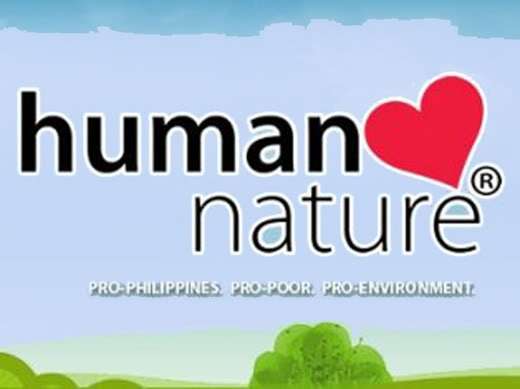I got vaccinated! After weeks and weeks of waiting, I finally got my first dose of the COVID vaccine!
 |
| Vaccinated! 06.26.2021 |
You've probably seen this photo on my
Instagram or on my
Facebook page
(if you're following me, that is). It's been a little over a week since this happened; I actually waited for a few days before writing about my vaccine experience because I was looking out for the side effects. That being said, here's what transpired before, during, and after vaccination day.
A bit of a backstory first...
We had a COVID scare sometime last April. Two of our neighbors from the same household tested positive, and although I did not have direct contact with them, I was a close contact of my next-door neighbor who had been exposed to them. Upon hearing the news that they tested positive, I became extremely frantic, broke down, cried, and prayed so hard that neither Yue and I got the virus Yue and I immediately went on self-quarantine and spent the next 14 days completely locked up inside our home, not even daring to set foot outside the door.
We were hoping that we would be swabbed (RT-PCR test), but no one from the City Health Office came to our place because we weren't declared as close contacts despite possible exposure and living next-door to two COVID patients. Thankfully, we were able to finish our 14-day self quarantine without a hitch. No symptoms whatsoever. No colds, no cough, no fever, and definitely no loss of smell and taste.
After that ordeal, I became more hellbent than ever in getting vaccinated. About a day or two after our quarantine ended, I immediately went to our barangay hall and submitted my vaccine registration form (this form was distributed house-to-house by our barangay officials a few days before our COVID scare incident) together with a copy of my government IDs (Philhealth, SSS, and TIN) and a 2x2 ID picture.
 |
| Our LGU's vaccine registration form. |
Afterwards, I got in touch with doctor friends and relatives working in local hospitals on what I should do next. My Mum, who is a nurse in the UK, strongly advised me to get a blood work done before I get vaccinated because of my hypertension and asthma. I skipped this part, though, out of fear of catching the virus (most of the diagnostic laboratories here also offer rapid antigen testing, and I don't want to be exposed to anybody possibly carrying the virus).
Thankfully, I was able to secure a medical certificate and an updated prescription from my pulmonologist with the help of my cousin who works as a nurse at the general hospital. Both are required for those under the A3 category aka 'Persons with Comorbidities'.
And so the waiting game began...
About a week or two after I have submitted my registration form, the vaccine rollouts began in my city. First to be vaccinated were the medical frontliners, barangay health workers, and other frontliners for the barangays and LGU (A1 category). Later on, they began vaccinating on the senior citizens (also known as the A2s), as well as those with comorbidities (A3). During these times, the vaccines that were being administered were either Sinovac or Astra Zeneca.
The month of May came and went, and still no notification from the barangay or the City Health Office about my vaccination schedule. Entering the month of June, news about the Pfizer vaccine arriving in our LGU started to spread like wildfire. By this time, I was getting excited, at the same time desperate to be vaccinated. From time to time, I would check with my cousin if I already have a vaccination schedule.
After so many, many weeks of waiting, the call that I had been waiting for finally came. Around noontime of June 25, I got the call from the General Hospital that I was scheduled for vaccination the next day (June 26). Luckily, my siblings and I were scheduled on the same day, too. We were advised to come to the vaccination site in the morning, as early as possible, because the vaccination will be on a 'first come, first served' basis.
Vaccination day, finally!
The following day, I was up by 4:30 am, the earliest that I have woken up ever since the lockdown started. By 6 am, my siblings and I were on our way to the Mega Vaccination Site, located in the outskirts of the city, about 2 miles from where we live.
 |
| The Mega Vaccination Site, located in Brgy. San Jose, San Pablo City. |
There was already a throng of people when we entered the building. They were all seated, already occupying almost half of the seats inside the vaccination site. Thankfully, we were able to secure seats easily, and as soon as we sat down, we were handed a bunch of papers which included a consent form, an assessment form, a monitoring checklist, a discharge form, and some pertinent information about COVID vaccines and what vaccine will be administered to you.
 |
| Vaccine FAQ's + some forms that you need to fill out. |
From the get-go, I knew that we were getting the Pfizer vaccine, and inwardly, I was screaming for excitement and joy. I tried not to get too excited though, because my blood pressure might shoot up.
Now here's what to expect if you're getting the COVID vaccine at the San Pablo City Mega Vaccination Site. First is the Registration Area. This is where they confirm your identity and double check if you are indeed scheduled for vaccination on that particular day. Strictly no walk-ins!
 |
| The organized crowd, sitting in line for the Registration Area. |
Step 2 is the
Counselling Area. Here, they check and monitor your blood pressure and inform you about the vaccination process. The staff and nurses at this point are nice and friendly, and more than willing to answer all your questions regarding vaccines.
 |
| Normal blood pressure, yay! |
 |
| My brother, also sitting in line. |
Next is the Screening Area where a doctor will check your health condition and assess whether or not you are fit for vaccination.
 |
| Step 3- Screening Area. |
My greatest fear that day was my blood pressure shooting up and not being able to get vaccinated because of my hypertension. Thank goodness that did not happen and I was given the 'Vaccinate' stamp of approval by the attending physician.
Then, we got to the much-awaited step - the Vaccination Area. The photo above is the line leading to the vaccination room.
 |
| Inside the Vaccination Room. |
This photo is inside the Vaccination Room. I asked permission from the doctor if I could take pictures of myself while getting vaccinated for blogging purposes. The kind doctor, Dr. Lucy Celino, asked me to hand my phone over to the nurse beside her so she can take my pictures instead. Thank you, Doc! :)
 |
| Good jab! Excuse my fat arms, lol. |
Once you exit the Vaccination Area, you go straight to the Encoding Area where they check your forms, your ID, and your vaccination card. Afterwards, the nurses will then usher you to the Monitoring Area where they will once again check your blood pressure and monitor your condition for the next 30 minutes before endorsing you for discharge. The nurses had to check my blood pressure twice because my blood pressure was at 140/90 when I entered the Monitoring Area.
After fifteen minutes, my blood pressure was back to normal and I was then endorsed to the Discharge Area. This is the last and final step where a doctor will talk to you and explain the possible side effects of the vaccine and what you should do in case you get allergies, feel nauseous, or experience difficulty in breathing.
And with that, after nearly four hours of waiting/sitting in line, our first dose of the COVID vaccine was done! Thank you to the hardworking nurses, doctors, and staff of the San Pablo City General Hospital who were in charge of the San Pablo City Mega Vaccination Site! You guys are awesome!
 |
| Good jab! :) |
Any side effects?
Surprisingly, there were no adverse side effects with the Pfizer vaccine. My left arm felt very heavy and the injection site felt quite sore for the next three days, but that was pretty much it. I felt a bit of nausea the day after vaccination, but it was fleeting, like less than an hour. I can't even attribute it directly to the vaccine because I was also extremely busy that day - cooking, cleaning the house, replying to emails, beating a writing deadline, and working on a blog campaign all at the same time.
I'm hoping the second dose won't have adverse side effects as well. We're getting our second dose on the 18th if there will be no changes to the schedule.
For those of you who have not been vaccinated yet, you may now register online, especially if you belong to the A1, A2, and A3 categories. The
San Pablo LGU is also encouraging those from the
A4 (Economic Frontliners) and
A5 (Indigent Population) categories to sign-up for vaccination, too. You can now register online with this link:
https://tinyurl.com/SPCERegistro
You may also coordinate with your respective barangay regarding the registration and your vaccination schedule.







































